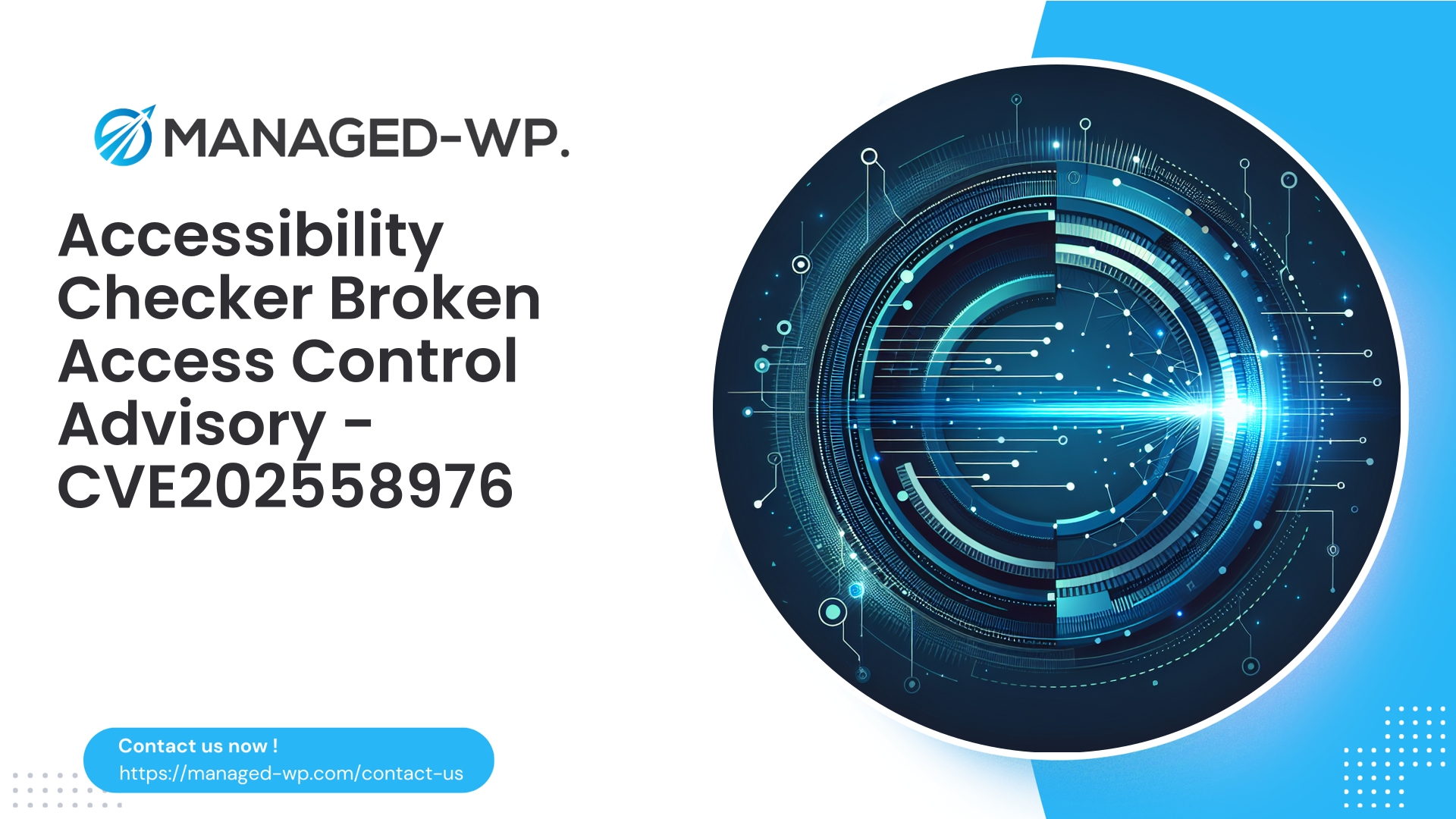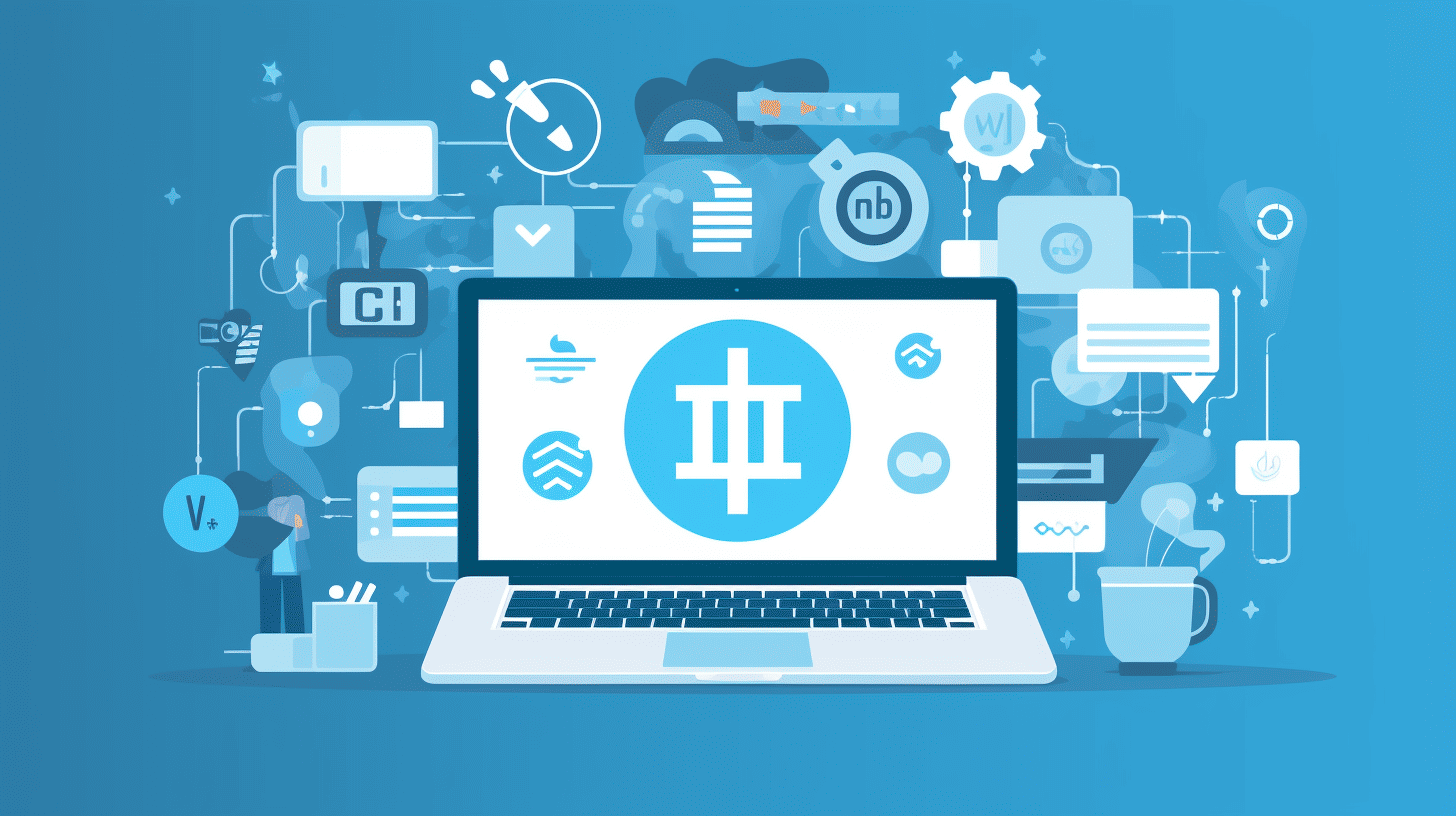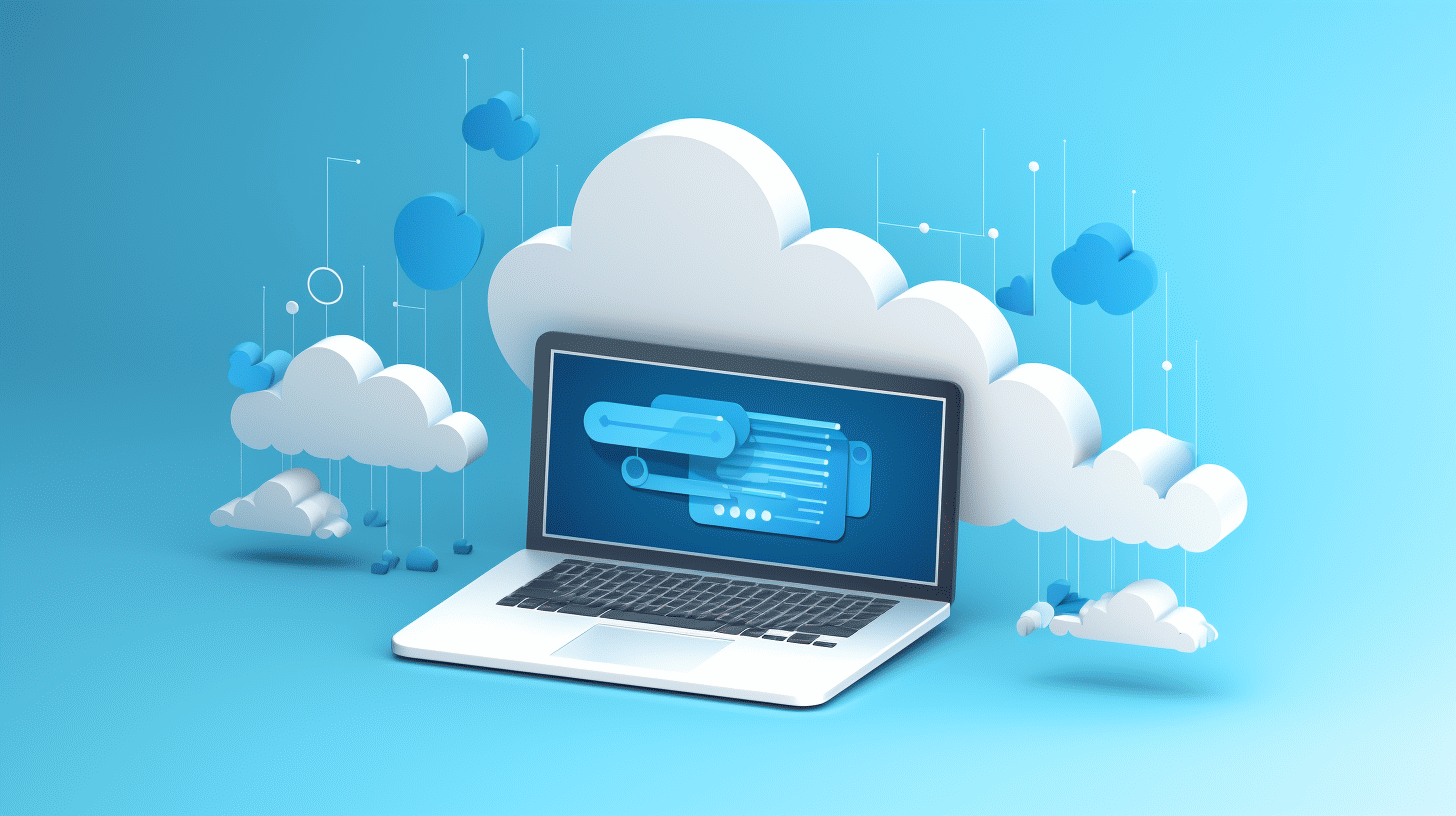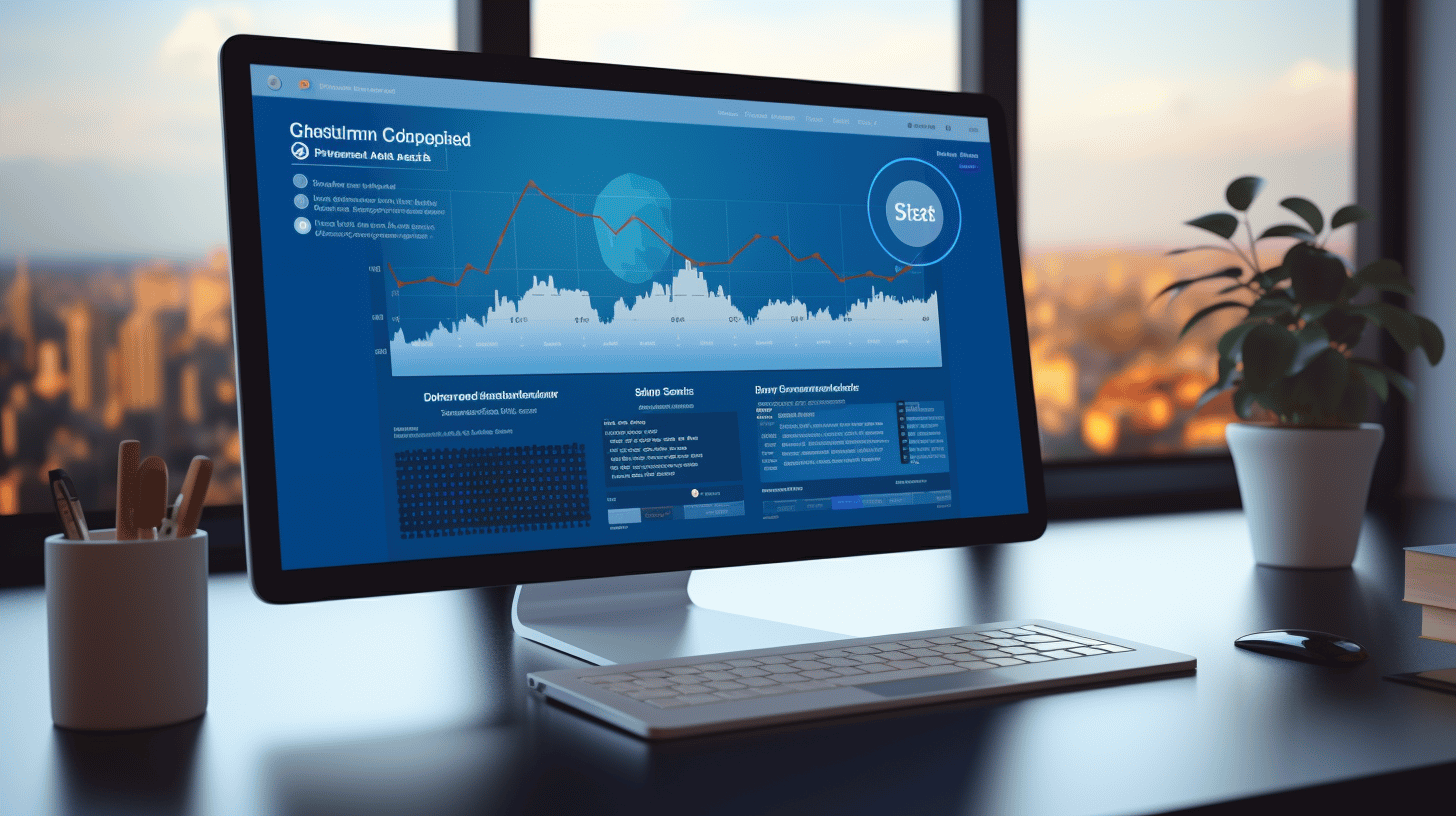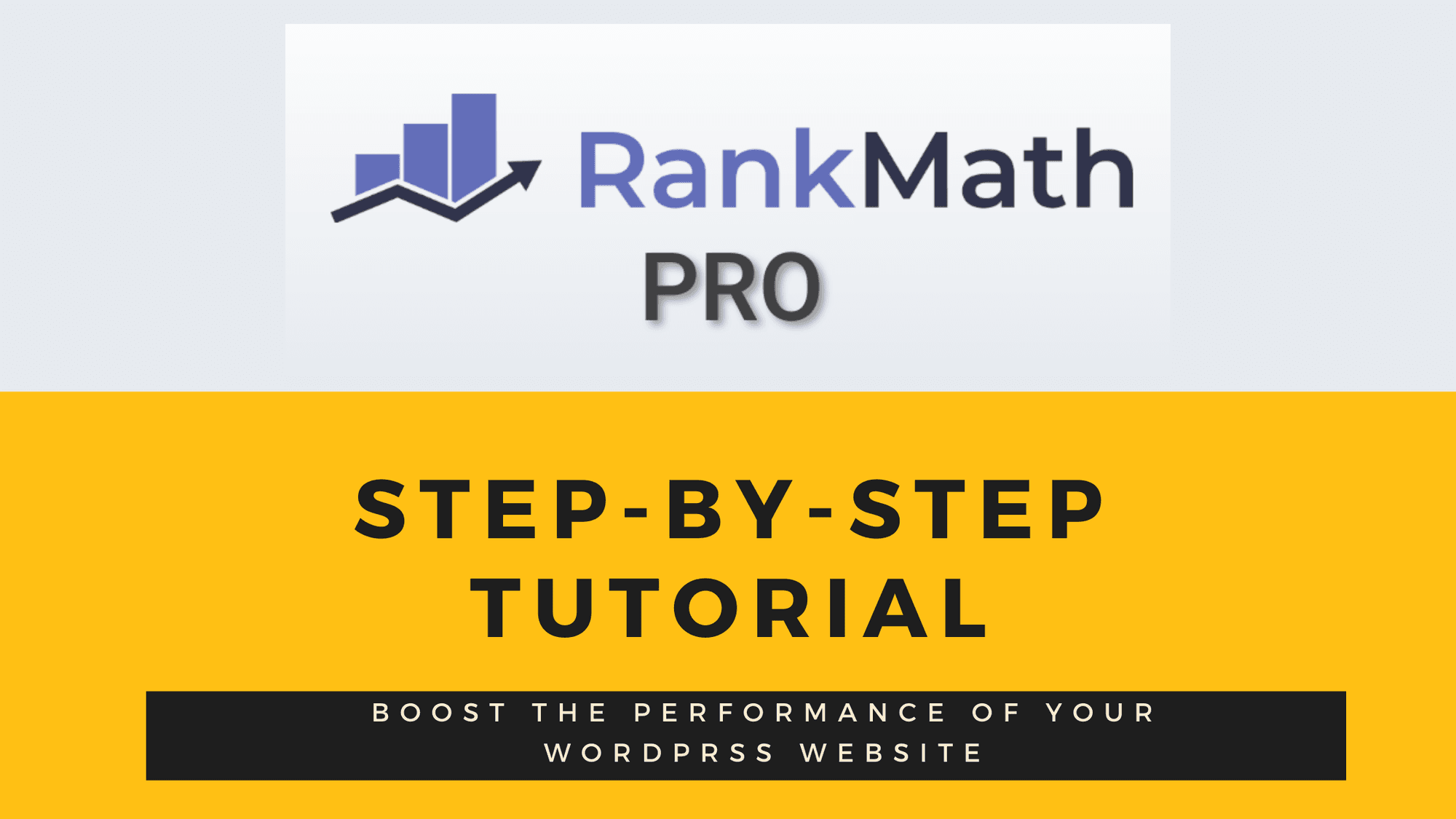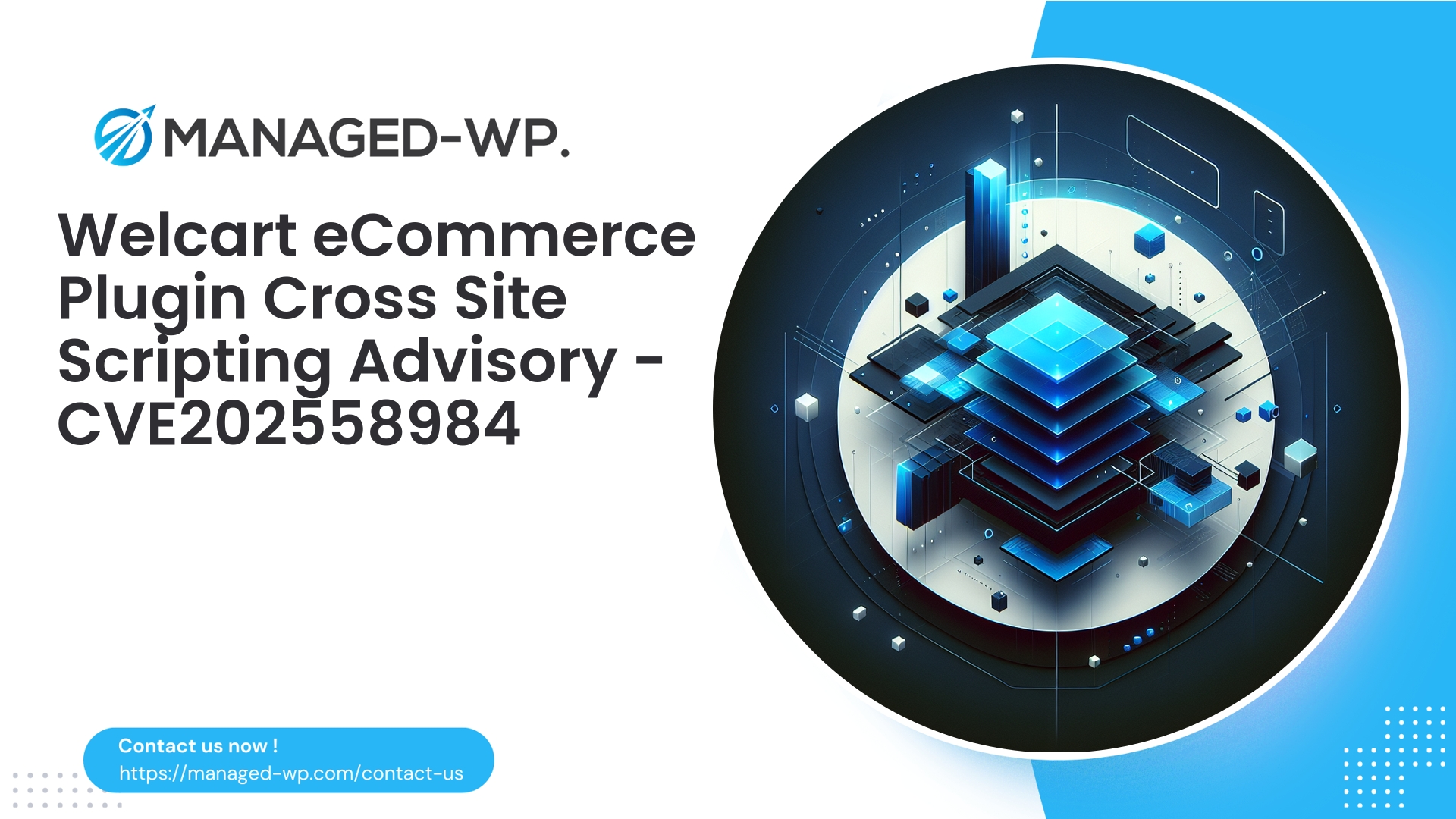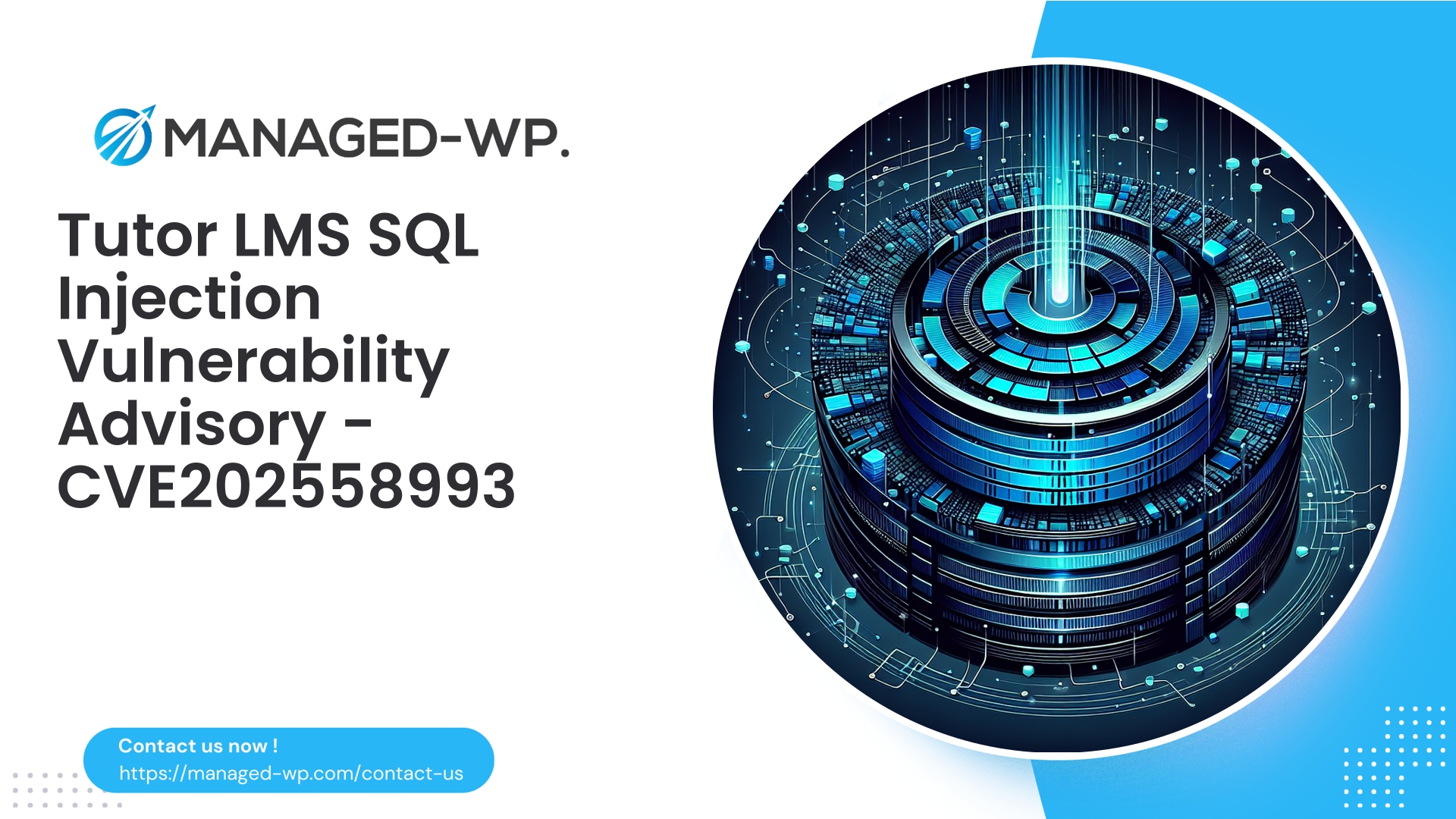| 插件名称 | 辅助功能检查器 |
|---|---|
| 漏洞类型 | 访问控制失效 |
| CVE编号 | CVE-2025-58976 |
| 紧急 | 低的 |
| CVE 发布日期 | 2025-09-09 |
| 源网址 | CVE-2025-58976 |
紧急安全警报:Accessibility Checker ≤ 1.31.0 — 访问控制失效 (CVE-2025-58976)
来自 Managed-WP 美国安全专家的重要 WordPress 安全更新
2025年9月9日,Equalize Digital公司的Accessibility Checker插件(版本1.31.0及更早版本)被公开披露存在一个访问控制漏洞(CVE-2025-58976)。该严重漏洞已在1.31.1版本中修复。该漏洞允许低权限用户(订阅者角色)利用插件端点授权检查缺失或执行不当的情况,调用更高权限的功能。
虽然 CVSS 评级为低 (4.3),大规模利用的可能性有限,但此漏洞凸显了访问控制不足带来的严重风险。攻击者可以利用此类漏洞,通过原本合法的功能执行未经授权的操作,从而可能加剧 WordPress 环境的风险。作为您托管的 WordPress 安全团队,Managed-WP 提供详细的分析和切实可行的指导,帮助您快速有效地应对挑战。
本简报专为寻求清晰技术建议的网站所有者、IT 安全团队和 WordPress 管理员量身定制。
TL;DR — 立即采取的措施
- 更新辅助功能检查器插件 版本 1.31.1 或者稍后立即执行。
- 如果立即更新不可行,则应及时更新。 禁用 插件或应用 Web 应用程序防火墙 (WAF) 规则来阻止受影响的插件端点。
- 审核用户帐户和网站活动日志,查找可疑访问或滥用迹象。
- 在进行故障排查时,可以考虑使用 Managed-WP 的免费防火墙保护计划来部署托管 WAF 防御、恶意软件扫描和缓解常见的 WordPress 威胁。
免费计划详情及注册: https://my.wp-firewall.com/buy/wp-firewall-free-plan/
了解此漏洞中失效的访问控制
当插件在未进行适当授权验证的情况下公开功能时,就会出现访问控制失效的情况。常见的陷阱包括:
- 能力检查的缺失或使用不当,例如
当前用户可以(). - 状态改变操作省略了 nonce 验证。
- 缺少适当的 REST API 端点
权限回调处理程序。 - 未能按角色或权限限制 admin-ajax 或 REST 路由。
在这种情况下,该漏洞允许拥有“订阅者”角色(WordPress 网站上权限最低的级别)的用户访问仅供编辑或管理员使用的功能。如果您的网站允许公开注册或存在已被盗用的订阅者帐户,则利用此漏洞可能实现自动化并广泛传播。
为什么CVSS评分“低”但仍然很重要?
CVSS评分4.3反映了短期内技术影响有限,但这低估了系统性风险:
- 未经授权访问插件数据或配置。
- 插件内部潜在的状态变化会增加攻击面。
- 此缺陷可能与其他漏洞结合,导致更严重的后果。
访问控制缺失十分常见,而且往往是攻击者利用漏洞的第一步。快速修补漏洞和多层防御至关重要。
披露详情
- 报告来源:Certus Cybersecurity(2025年8月下旬报告)
- 公开公告:2025年9月9日
- 受影响版本:辅助功能检查器 ≤ 1.31.0
- 已在 1.31.1 版本中修复
- CVE编号:CVE-2025-58976
立即响应(前24小时)
- 立即更新辅助功能检查器 1.31.1 或者稍后。
- 如果无法立即进行更新:
- 暂时禁用辅助功能检查器插件。
- 如果您的网站允许匿名创建订阅者,请禁用公共用户注册。
- 审核所有用户帐户,检查是否存在意外创建或可疑活动;删除或锁定可疑用户。
- 查看服务器和应用程序日志,查找针对插件端点的异常请求。
- 启用 WAF 虚拟修补规则,阻止恶意插件访问,直到应用更新。
检测攻击尝试
寻找:
- 异常的 POST 请求
admin-ajax.php与辅助功能检查器相关的操作。 - 对插件特定命名空间的 REST API 调用,特别是写入/更新/删除操作。
- 来自具有订阅者角色的帐户的请求,尝试执行管理员级别的功能。
- 意外创建管理员用户或未经授权更改插件设置。
- 在可疑活动发生前后创建的可疑定时任务(cron)。
- 插件目录中的文件完整性异常。
潜在的搜索查询/模式:
admin-ajax.php?action=/wp-json/accessibility-checker/- 针对这些端点的重复且不寻常的 IP 或用户代理模式。
关联托管、CDN 和安全服务提供商的日志,以进行全面检测。
当无法立即更新时可采取的缓解措施
- 暂时禁用该插件 — 如果插件对实际运行并非至关重要,则这是最佳选择。
-
通过WAF进行虚拟补丁:
- 阻止向特定 AJAX 操作发送 POST 请求。
- 阻止插件命名空间下的状态修改型 REST 请求。
- 限制订阅用户帐户对管理员/非公共端点的访问。
伪WAF规则示例:
# 阻止易受攻击的 AJAX 操作:如果请求 URI 包含“/wp-admin/admin-ajax.php”且请求方法为“POST”且参数[“action”] 包含“accessibility_checker_action1”或“accessibility_checker_action2”,则阻止。# 阻止风险 REST API 调用:如果请求 URI 匹配“^/wp-json/accessibility-checker/.*$”且请求方法为“POST”、“PUT”或“DELETE”,则阻止。
- 速率限制和地理封锁 针对可疑的IP地址范围。
- 禁用公共用户注册功能,以防止攻击者创建帐户。
- 对特权账户强制执行双因素身份验证(2FA)。
开发者和插件维护者指南
通过实施以下措施确保健全的访问控制:
- 服务器端功能检查 和
当前用户可以()—永远不要完全依赖客户端控件。 - 随机数验证 对于所有改变状态的 AJAX 或表单操作(
检查管理员引用者(),wp_verify_nonce()). - 严格的权限回调 所有通过注册的 REST API 路由
register_rest_route(). - 对所有输入参数进行清理和验证。
- 自动化测试验证所有暴露端点的权限执行情况。
REST路由权限回调示例:
register_rest_route( 'ac/v1', '/do-something', array( 'methods' => 'POST', 'callback' => 'ac_do_something', 'permission_callback' => function( $request ) { // 仅允许编辑或更高权限的用户 return current_user_can( 'manage_options' ); } ) );
潜在攻击途径(概述)
此漏洞允许订阅者在未经授权的情况下调用 REST 或 AJAX 端点,从而启动辅助功能扫描、保存结果或更改插件设置。虽然订阅者的权限通常受到限制,但如果您的网站允许公开注册或存在已泄露的订阅者凭据,则存在一种低门槛的暴露途径。
为保护您的环境,请将任何订阅用户尝试调用管理员功能的行为视为可疑行为。我们不会公开具体的漏洞利用细节,以避免助长攻击。
事件响应检查表
- 立即保存所有相关日志和系统快照。
- 如果怀疑存在安全漏洞,则隔离受影响地点,以防止进一步损害。
- 轮换所有关键凭证:
- 管理员密码
- API密钥
- 数据库中存储的令牌
- 寻找持续存在的迹象:
- 未经授权的管理员用户
- 修改过的核心文件或插件文件
- 可疑的定时任务
- 上传/插件中存在投放脚本或奇怪文件
- 如果可能,请从已知有效的备份中恢复。
- 清理完毕后,加强安全态势:启用双因素身份验证、更新所有插件、应用 Web 应用防火墙规则并启用持续监控。
- 如有必要,请聘请专业的事故响应服务机构进行全面补救。
最大限度降低未来风险的最佳实践
- 严格执行最小特权原则。
- 移除未使用的用户角色和插件。
- 在正式部署之前,先在测试环境中测试所有更新。
- 保持频繁且可验证的备份。
- 为所有特权账户启用双因素身份验证。
- 尽可能通过 IP 地址限制对 wp-admin 的访问。
- 维护一份最新的、暴露公共端点的插件清单。
- 订阅漏洞情报或使用 Managed-WP 等托管安全服务。
托管式 WordPress 防火墙的作用
托管式 WAF 通过以下方式提供关键的保护层:
- 应用虚拟补丁来阻止HTTP级别的漏洞利用尝试。
- 使用基于签名的规则来定位易受攻击的 REST/AJAX 端点。
- 通过速率限制来遏制自动化攻击流量。
- 减少恶意 IP 地址和恶意机器人的干扰。
- 扫描恶意软件并隔离已知威胁。
笔记: WAF(Web应用防火墙)并不能纠正应用程序逻辑缺陷,它只能在您打补丁时最大限度地降低风险。它也无法阻止拥有有效管理员凭据的攻击者。纵深防御仍然至关重要。
Managed-WP 提供免费方案,可快速部署并进行基本安全加固,从而提供这些保护措施。
WAF规则概念示例(根据您的环境进行调整)
部署前,务必在测试环境中进行全面测试。
- 阻止与此插件相关的 AJAX 操作的 POST 请求:
如果 request_uri 包含 "/wp-admin/admin-ajax.php" 且 request_method 等于 "POST" 且 (ARGS['action'] 匹配 "(ac_.*|accessibility_.*)") 则阻止
- 阻止改变状态的 REST 调用:
如果 request_uri 匹配 "^/wp-json/accessibility-checker/.*$" 且 request_method 为 "POST", "PUT", "DELETE"),则阻止
- 拒绝订阅者向管理员页面提出的请求(如果 WAF 集成了角色信息):
如果 authenticated_user_role 等于 "subscriber" 且 request_uri 包含 "/wp-admin/",则阻止
- 限制插件端点请求速率,每个 IP 地址每分钟请求 5 次:
如果 request_uri 匹配 "^/wp-json/accessibility-checker/.*$",则应用速率限制(5/分钟)
规则语法会因 WAF 提供商而异;这些仅供参考。
补丁后监测与验证
- 运行恶意软件扫描以确认系统干净。
- 查看 WAF 日志,根据阻止的尝试来识别和调整规则。
- 如果您有开发资源,请对插件端点执行权限审核。
- 一旦确认打过补丁的插件使用无误,即可移除或放宽 WAF 虚拟补丁。
插件更新和代码审核的重要性
开源推动创新,但也需要保持警惕。由于代码路径复杂、端点多样以及角色交互复杂,访问控制经常成为安全漏洞的来源。
插件维护者必须优先考虑:
- 自动化权限强制执行测试。
- 全面代码审查,重点检查 nonce 值和功能。
- 清晰的端点权限文档。
网站所有者应将插件更新(尤其是那些暴露 API 和管理功能的插件更新)视为紧急安全问题,而不必在意 CVSS 评分。
使用 Managed-WP 免费计划快速保护您的 WordPress 网站
Managed-WP 的基础套餐(免费)提供以下功能:
- 托管防火墙和无限带宽WAF。
- 全面恶意软件扫描。
- 缓解OWASP十大风险。
几分钟内即可激活: https://my.wp-firewall.com/buy/wp-firewall-free-plan/
如需高级保护,包括自动清除恶意软件、高级防火墙控制、报告和优先支持,请了解 Managed-WP 的标准版和专业版计划。
网站所有者最终安全检查清单
- 更新辅助功能检查器 1.31.1 或立即提高。
- 如果更新延迟,请暂时禁用插件或强制执行 WAF 规则。
- 审核用户账户,并在适用情况下禁用公开注册。
- 检查日志中是否存在异常的插件端点访问。
- 保存有关疑似入侵事件的取证数据。
- 启用双因素身份验证,并在事件发生后轮换凭据。
- 部署托管防火墙/虚拟补丁程序,以最大限度地减少暴露窗口。
- 定期审核插件,并使用测试环境进行更新。
闭幕致辞
授权检查失效仍然是一个普遍存在且危险的问题。虽然此漏洞的严重程度被评为低,但它仍然有力地提醒我们:多层防御和及时修补对于 WordPress 安全至关重要。请尽快应用更新或使用强大的补偿控制措施。
Managed-WP 的安全专家随时准备协助您进行 WAF 规则实施、日志分析和持续漏洞管理。使用 Managed-WP 的基础免费防火墙方案,快速保护您的网站安全:











